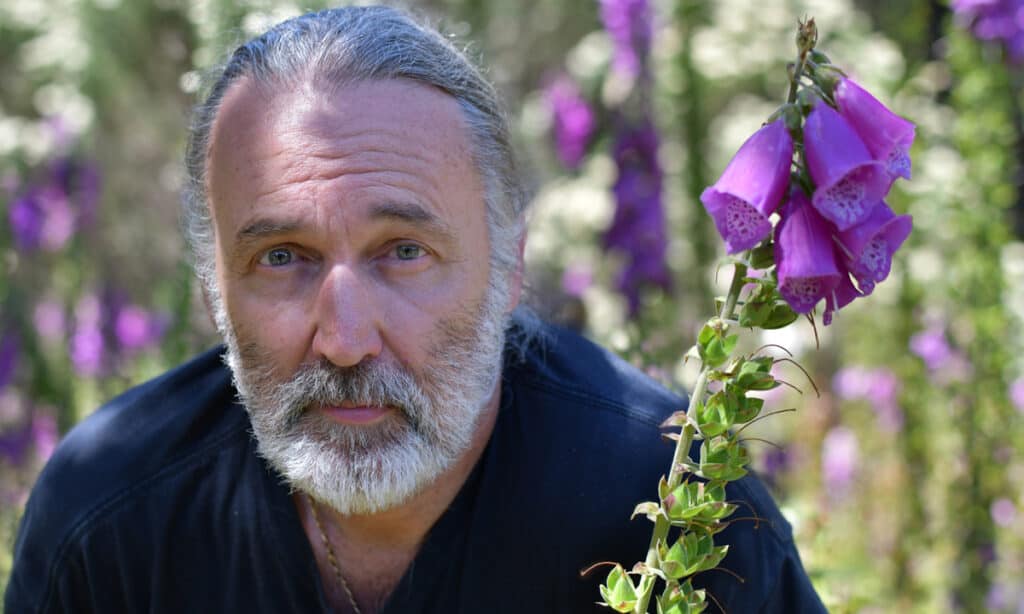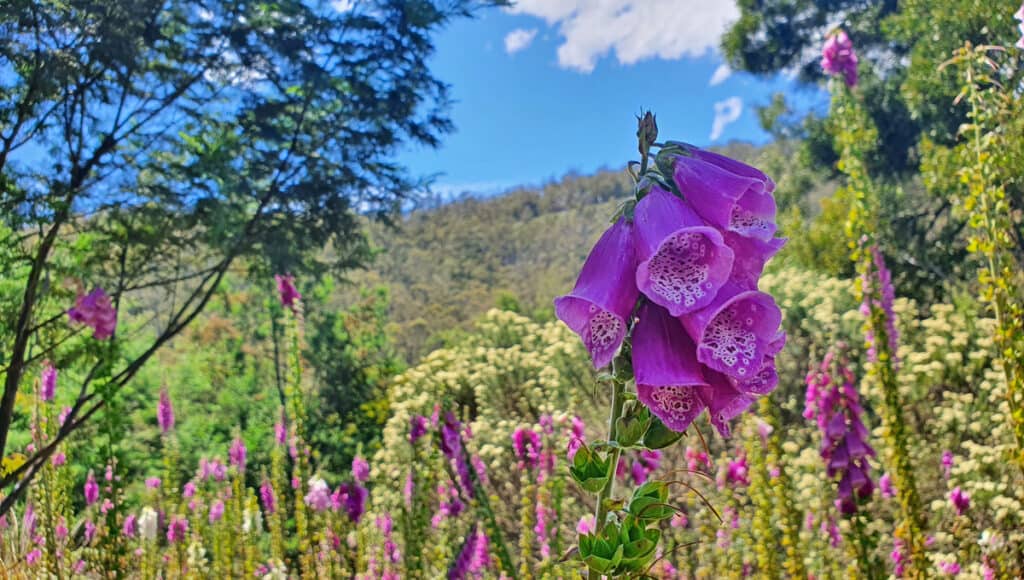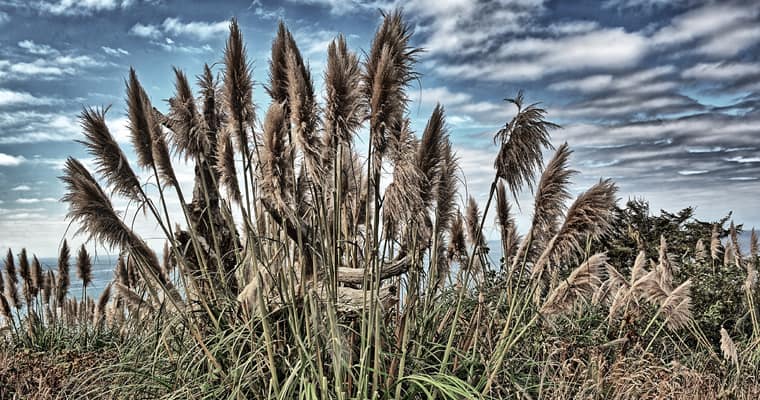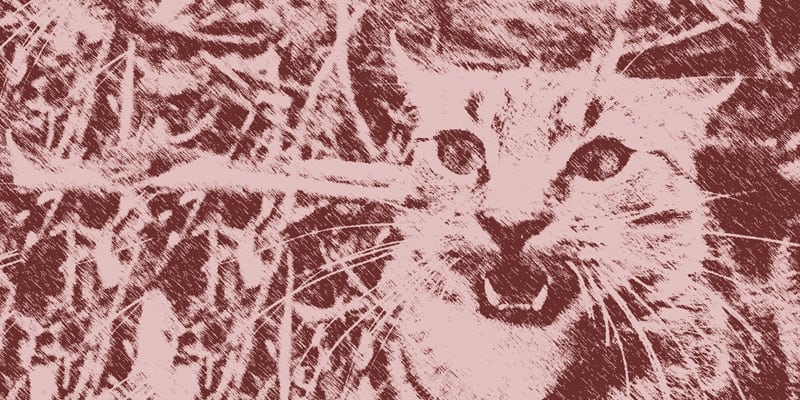
UPDATE (February 2024): Tasmania has declared its intention to classify foxglove as a weed! Congratulations Jim Godfrey for achieving this positive outcome!
UPDATE (June 2023): This petition is now closed.
A push is on in Tasmania to have foxglove listed a declared weed, where it would join the ranks of Spanish heath, hawkweed, serrated tussock and gorse.
The listing would put the onus on property managers to control the bushland invader on their own land, prevent the sale of foxglove in nurseries and help keep it out of the Tasmanian Wilderness World Heritage Area.
Tasmanians are being urged to join the campaign by signing a new Parliamentary petition.
The drive to list foxglove is being led by former horticulturalist Jim Godfrey, who has quickly gained a following for the cause on his Tasmanian Foxglove Facebook page.
People are posting photos to the page of foxglove invading bushland and forest right across Tasmania, and Jim is curating a Google Map of the sightings, which are growing in number every day.
“I have lived in Tassie for 22 years, I go into battle with all the usuals, blackberry, dock, thistles, Spanish heath, and I like to think my property is pretty clean when it comes to environmental weeds, but I have never seen anything spread as quickly foxglove,” he says.
“People are sending me photos and messages from right across Tasmania about how bad foxglove is in their neck of the woods.
“One small landholder told me he had to destock his property after losing a number of animals to foxglove poisoning. At one point he ploughed up his paddock to plant potatoes, but the soil was full of foxglove seed and before he knew it the land was covered in the stuff.
“I’m hearing foxglove has made its way into Cradle Mountain Valley and it is on its way to Cradle Mountain. Foxglove is spreading like wildfire and something has to be done about it.”
The Google Map Jim is developing showing foxglove infestations across Tasmania.
A beautiful horror show
An introduced ornamental plant, foxglove (Digitalis purpurea) was listed for sale in Australia as far back as 1836. Now widespread across Tasmania it smothers and outcompetes native plants, leading to reduced native habitat for local wildlife, and displacing native plants and the native insects that depend on them.
The recent, exponential spread of foxglove can be correlated to the introduction and establishment of bumblebees in Tasmania. The large, heavy bees, which evolved on the other side of the world with foxglove, are thought to have been illegally brought into Tasmania in the early 1990s.
The push to stop the spread of foxglove has also gained the attention of former Greens leader Bob Brown, who says the campaign to publicise and stop the spread of foxglove shows the power of one in helping protect Tasmania’s natural places and species.
“Foxgloves have a beautiful flower but are a good-for-nothing horror weed,” he says.
“Each year they are costing thousands if not millions of dollars as farmers and volunteer groups tackle their rapid spread. Jim’s work needs the back-up by the state government with a targeted campaign and assistance to the foxglove fighters.
“I am alarmed by the foxgloves spreading up the Lake Highway south of Deloraine and now entering the Central Plateau section of the Tasmanian Wilderness World Heritage Area. They are coming from forestry operations above the Liffey Falls.
“Government action would stop them now but if they get a grip on the plateau they will smother it to the detriment of fragile alpine vegetation as well as the wildlife.”
Invasive Species Council ambassador Christine Milne lives in Hobart and often travels to the north of the state to visit family and friends. She says she’s noticing the spread of foxglove more than ever.
“Not only is foxglove moving into high value conservation areas in the north of Tasmania, it’s in Fern Tree and clearly poses a threat to subalpine vegetation on kunanyi/Mt Wellington.”

Can we stop foxy loxy?
Foxglove flourishes in a wide variety of conditions, from open and sunny through to damp, shady places, especially in disturbed soil. It’s even spreading in sand dunes on the other side of Macquarie Harbour at Pilots Beach.
Tasmania’s acidic soils provide ideal conditions for its growth. It reproduces from seed, is readily cross-pollinated by bumblebees, spreads easily by wind, water, garden waste and transport by vehicle and machinery movement.
Its leaves, flowers and seeds contain the cardiac glycoside digitoxin, which can be absorbed through the skin and is extremely poisonous, even fatal, to humans, wildlife and livestock.
The exponential growth rate of this plant across Tasmanian private land, agricultural land and bushland has become alarming due to the ease with which it reproduces and the difficulty inherent in its complete removal from infestation sites.
Seeds can remain viable for decades and yet despite the dangers of the plant, it is still sold in garden centres and promoted as an ornamental plant for home gardens.
Matt Baker, who specialises in weeds at the Tasmanian Museum and Art Gallery, says the hardy, easy-to-grow plant can produce half a million seeds a year.
He told ABC News the focus for foxglove should be on stopping it spreading to areas with high conservation values, such reserves and national parks.
Tips for controlling foxglove
- The best time to remove foxglove is in winter or spring, before the flowers develop and spread millions of viable seed.
- Start in areas of lowest infestation – don’t start in the really dense areas.
- Disturb the soil as little as possible when pulling out foxglove.
- You could use a sharp trowel or knife to sever the fine roots to minimise soil disturbance.
- Be sure to strip or remove the flower stalk, and, if seeds are mature, bin it.
- Join a local Bushcare or Landcare group that is working to control foxglove.




